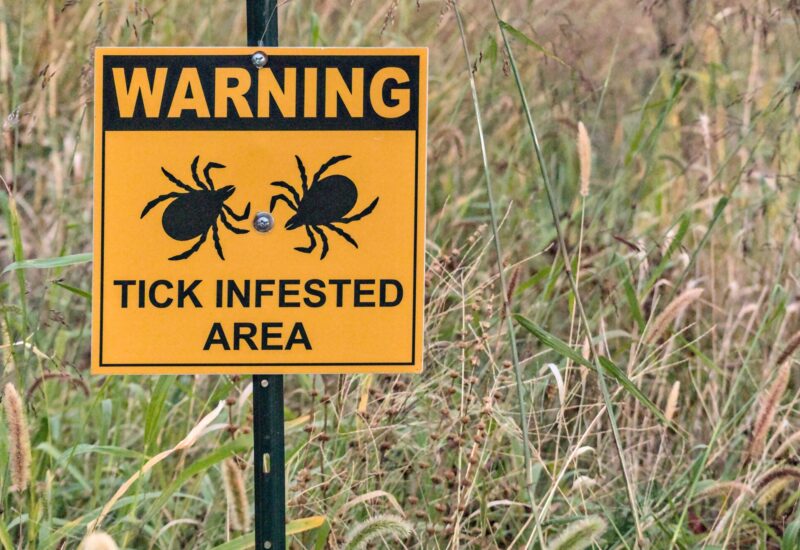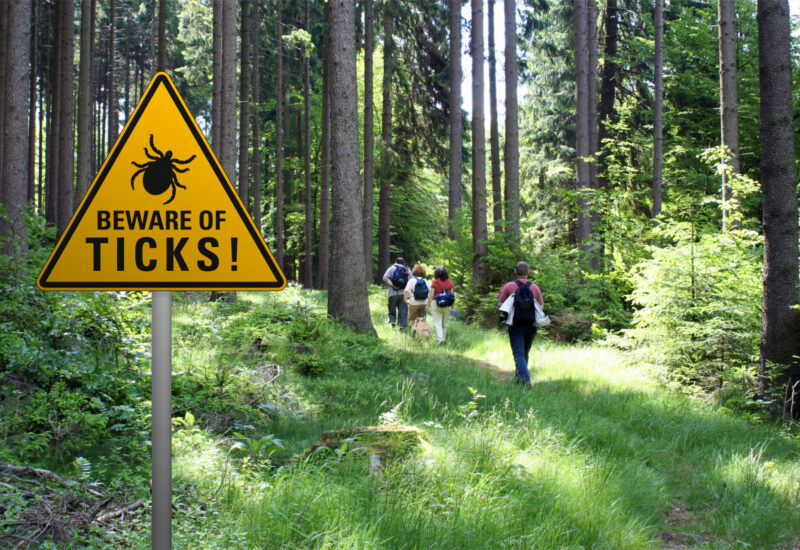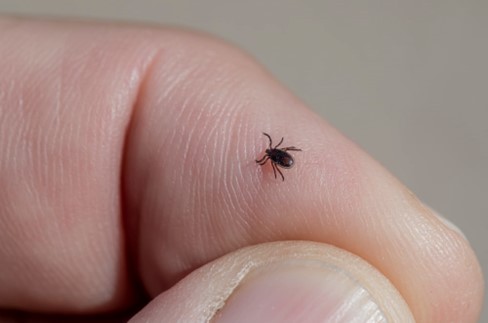Tick-Borne Virus Kills Connecticut Resident

Learn More About the Powassan Tick-Borne Virus, Including Which Tick Can Spread the Disease & How to Protect Yourself
The Powassan virus is rare, but it can be deadly, and cases seem to be on the rise. From 1958 until 1998, only 27 cases were reported around the world, but in the last two decades, the number of cases increased by more than 600%.
Recently, there has been an upward trend of tick-borne diseases throughout the Northeast and many other places that are prone to ticks.
Recent news revealed that the Powassan virus has now claimed its second victim in as many months this year. The first Powassan-related casualty of 2022 occurred during the month of April in Maine. Just one month later, a Connecticut woman in her 90s also died from the Powassan virus.
In the most recent case, the woman became ill at the beginning of May. When she went to the hospital, she had a fever, chills, chest pain, nausea, and an altered mental status. Two weeks before experiencing symptoms, she was bitten by a tick.
These occurrences emphasize the importance of tick prevention. But before exploring ways to prevent tick bites, let’s take a closer look at what Powassan is and the steps you can take to protect yourself and your loved ones.
What is the Powassan Tick Virus?
Until recently, the Powassan virus was among the lesser-known tick-borne viruses. However, the virus is steadily becoming more common in areas like Massachusetts, Connecticut, New Hampshire, and Rhode Island. It spreads to humans after they are bitten by infected ticks.
Ticks contract the virus after feeding on infected rodents, including mice, squirrels, and groundhogs. The most common ticks responsible for transmission of the Powassan virus are the black-legged or deer tick, which are known to feed on deer, white-footed mice, and humans.
Many people who get infected with the Powassan virus experience no symptoms at all. Others typically feel ill within one to four weeks after being bitten by an infected tick. The virus can cause inflammation in the central nervous system, including the brain and spinal cord. Symptoms of the Powassan virus can include:
- Headache
- Fever
- Nausea and vomiting
- Weakness and confusion
- Trouble moving around; lack of coordination
- Difficulty speaking
- Seizures
For those with severe forms of Powassan disease, death can also occur. The Center for Disease Control and Prevention (CDC) estimates that one out of every 10 patients with severe Powassan dies.
How to Protect Yourself
The best form of protection against tick-borne illnesses is prevention. Tick viruses are always a concern, but especially as the temperatures rise and we spend more time outdoors.
To prevent tick bites, it helps to be aware of where the pests like to hang out. These tiny bloodsuckers prefer wooded areas, brush, and tall grass. You could be exposed while hiking, walking, gardening — essentially any outdoor activity during the warmer months.
After spending time outside, do a thorough check to look for ticks before the pest has a chance to settle in and bite.
To check for ticks, thoroughly examine clothing, shoes, and exposed areas of the body. Ideally, disrobe and use a mirror to check all areas of skin. Ticks can bite anywhere, but be sure to pay special attention to certain areas, including:
- Underarms
- Behind the knees
- In and around the hair
- Inside and around the ears
- Inside the belly button
- Head and neck
- Groin
Unlike Lyme disease, Powassan transmission happens quickly, typically within minutes of getting bitten. That’s why bite prevention is particularly important for Powassan, although it’s always good practice to avoid ticks of all types.
Keep ticks away by treating gear and clothing with products that contain 0.5% permethrin, which has the protective power that stays strong even through multiple washings. Use insect repellents that contain oil of lemon eucalyptus, DEET, or another option approved by the Environmental Protection Agency (EPA).
Lastly, don’t forget that it’s possible to get a tick bite in your own backyard. Keeping grass and shrubs neatly trimmed, cleaning up debris, and getting help from professionals can serve as a shield of protection to restore your peace of mind.
How Professional Tick Control Can Help
Powassan isn’t the only tick virus to consider in 2022. Lyme disease, anaplasmosis, and babesiosis are a few other tick-borne viruses carried by the black-legged tick. Catseye Pest Control offers a comprehensive Tick Control Program that eliminates the threat of ticks and helps to defend the property throughout the warmer months.
Service begins with a thorough inspection of the property to determine the best course of action. Based on those findings, Catseye creates a customized treatment plan to eliminate the threat of ticks and a strategy to prevent tick infestations in the future.
Ready to get started? Contact Catseye today to learn more about how professional tick control can help protect your property by starting with a free inspection.






